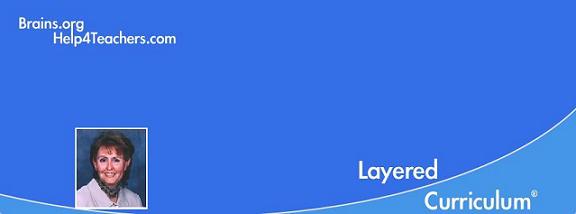__________Layered Curriculum®. . . because every child deserves a special education™_
 |
|
![]() _
_ ![]()
Layered
Curriculum TEXT & WORKBOOK
Set
for only
$43.95
(free shipping in
US)
Tweet
Students with Learning DisabilitiesBy Dr. Kathie F. Nunley
A student labeled as LD, or learning disabled has difficulty with language, memory, listening, speaking, reading, writing, spelling, math and/or motor skills. They have a problem with storing, processing and producing information. The problems range from mild to severe. It affects about 10% of the general student population.
To be categorized as learning disabled, the student must have AT LEAST average intelligence, yet be underachieving in one or more academic areas. Some may be gifted students in one or more areas. These students CAN learn, but may need material presented in a different modality or form than the traditional classroom once offered.
Ways to include students with Learning Disabilities
*Try offering assignments in a variety of forms.
*Demonstrate tasks.
*Provide extra space and extra time to process.
*Consider content and effort in addition to writing skills.
*Allow students to work in pairs.
*Use visual progress charts.
About the Author:
Dr Kathie Nunley is an educational psychologist, researcher and author of several books on parenting and teaching, including A Student's Brain (Brains.org) and the best selling, "Differentiating the High School Classroom" (Corwin Press). She is the developer of the Layered Curriculum® method of instruction and has worked with parents and educators around the world to better structure schools to make brain-friendly environments. In addition, her work has been used by the Boeing Corporation, Family Circle Magazine, the Washington Post, and ABC television.
Email her: Kathie (at) brains.orgCopyright © 1998 - current year by Kathie F. Nunley.
All Rights Reserved.
Layered
Curriculum is a registered trademark developed by
Dr. Kathie F. Nunley.